Il proiettile d'argento per il marketing delle startup

EOgni giorno vedo imprenditori e marketer di startup alla disperata ricerca di un trucco magico.
Una sorta di tattica segreta o di hack che faccia piovere denaro su di loro in men che non si dica. Come i codici cheat per il vostro videogioco preferito.

Come tutte le altre startup intorno a loro.
One little trick and BOOM 💥 — explosive growth as far as the human eye can see.
Why can’t we have that? 🙄
Growth hacks they call them. The internet’s version of black magic.
Chances are you’ve been on a quest to find the secret for a while now 😯.
Chances are you’re looking for such a secret at this very moment 😏.
Chances are you’ve already given up on ever finding the secret 😒.
Chances are you stopped believing the secret existed in the first place 🤔.
Chances are you’re reading this post because the title hints at the secret 😛.
 Ti sto trollando? 🤡
Ti sto trollando? 🤡
No. I’m a man of my word. I will show you the secret.
Perché sì, il segreto esiste .
But it’s not guarded by one of those growth hacking agencies that keeps on telling you that they’ll launch your startup into the stratosphere 🚀.
If only you would give them a shot.
👉 In exchange for about half your funding 💸 .
They’re not guarding anything. They just want you to believe that you know nothing and they know everything so you’ll give them their money.
Nella terra dei ciechi, un occhio solo è il re, ricordate? Questo si chiama marketing.

Don’t get me wrong.
Growth hacking is fun. It’s a great way to cut corners and get ahead of the competition 🏎️. You’ll win some ground and maybe, just maybe it’ll even get you some initial traction.
Ma questo vi porterà solo fino a dove vi permetterà di arrivare il vostro product-market fit.
True product-market fit is the one and only way to scale and growth hacking doesn’t hold the secret to getting you that.
Il segreto sta in voi 🗝️.
As a startup, you’re in the business of solving real-world problems.
You have a unique take on your topic’s problems. You have a unique set of tactics, strategies and approaches to solve those problems.
You have unique value to give ✨. Product — and content-wise.
Da qualche parte là fuori c'è un gruppo di persone con l'esatta serie di problemi che siete in grado di risolvere. Un gruppo di persone che ha bisogno del vostro valore. Il vostro pubblico.
👉 You just need to find that group of people — or have ‘m find you — and give ‘m what they need.
That’s it. That’s your secret 🗝️.
🎈 Giving out your value to the people it’s of value to.
Here’s the thing startups don’t seem to get 👇.
People won’t buy your product because you’ve been working your ass off for four straight years, living off a waiter’s salary, sleeping on a stinking mattress in your friend’s garage.
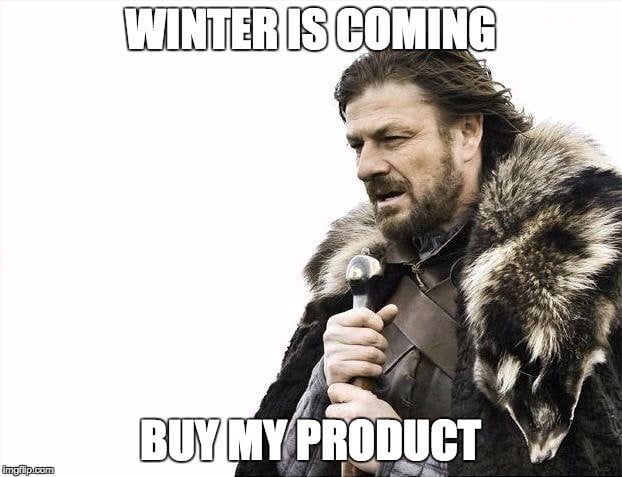
Le persone compreranno il vostro prodotto perché migliora la loro vita.
Vi state chiedendo perché nessuno legge i tuoi post?
Perché solo tua madre apprezza i tuoi aggiornamenti su Facebook?
Why you’re getting so much hate on your cold emails?
Why your website traffic isn’t going up?
Perché nessuno dei vostri utenti in prova inizia a pagare?
Here’s why 👉 Non importa a nessuno.
Mettere il vostro sangue, sudore e lacrime nel vostro prodotto non fa sì che loro vi debbano qualcosa. Questo vale per la vita in generale.
Quindi mi sta dicendo che dovrei puntare tutto sul prodotto e dimenticare il marketing? 🤔
No.
I’m telling you to find the people in need of the value you can give them.
I’m telling you to build a strategy around helping people.
I’m telling you to mettere il marketing al primo posto perché migliorerà sia il vostro prodotto che il vostro marketing. E più facile.
Meglio ancora: I’m telling you to put customers first.
TL;DR
- il growth hacking è divertente
- but it won’t sustainably grow your startup
- solo un vero adattamento del prodotto al mercato.
- il segreto della crescita sta in voi.
- give out value to people it’s of value to
- le persone comprano il vostro prodotto perché migliora la loro vita.
- costruire una strategia per aiutare le persone.
- mettere il marketing al primo posto.
- meglio ancora: mettere i clienti al primo posto.
9 out of 10 startups fall flat on their faces 🤕
You don’t find customers for your products.
You find products for your customers.
La maggior parte delle startup è guidata da un'idea. Qualcuno ha un'idea epica e poi gli addetti al marketing devono trovare un modo per convincere le persone a pagare per averla.
I get that 👍.
It’s way easier to build a product than to build an audience for it.
You have to talk to a lot less people. There’s nobody to tell you your epic idea is actually shit and your mom is proud of you because you’re chasing your dreams 💭.
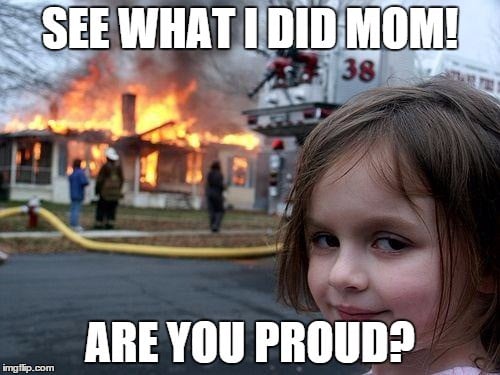
But here’s the thing.
Entrepreneurship is not about you and it’s not about your ‘epic’ idea.
It’s about making people’s lives better. It’s about helping and giving value 💝.
You know what’s even more difficult than building an audience?
Costruire un prodotto con e per un pubblico.
👉 Un prodotto da cui le persone traggono valore. Un prodotto che le persone cura circa 💕.
If people don’t care about your product, reality will catch up with you. Your world will come crashing down. All of your energy, time and money will have been for nothing.
And there’s nothing your mom can do about it 🤷.
La causa principale della morte?
Trying to build a product for a group of people that doesn’t exist.

TL;DR
- Le persone costruiscono prima i prodotti, poi il pubblico.
- but what if people then don’t care about your product?
- rivoluzionarlo
- costruire prima un pubblico, poi il prodotto per quel pubblico.
- o finire morti come 9 startup su 10 fanno.
Mediocre Viable Product 😕
Nel 2011 Eric Ries ha preso d'assalto il mondo delle startup con The Lean Startup.
People hailed it as the Bible of Startups 🙏.
Rightly so. The idea of starting from something small and gradually building it on customer input is probably the quickest way for a startup to find product-market fit 🖇️ and a scalable business model 📈.
If you haven’t read the Lean Startup (you should), here’s the gist of it:
- Build a Minimum Viable Product (MVP) 🎁
- Find out if people will pay money for it 💁
- Use feedback from those people to adapt the MVP up until the point a sustainable group of people will buy it 💰
An MVP is a product that has the minimum set of features to prove the hypothesis that is essential to your idea’s potential to exist.
(Just so we’re straight on that.)
Ora.
Remember the Product Adoption Curve? 😏

It’s one of those gazillion frameworks they show you in marketing class you instantly forget about. I did anyway 🤷.
The Product Adoption Curve is something all new kids on the block have to go through. Facebook, Slack, Uber and DVDs (still ring a bell? 🔔) — heck, even underwear at some point must have gone through it (hope those do ring a bell…).
Your MVP is meant to win over the innovators and, while you’re at it, the early adopters. The more the merrier, right? 🙌
Innovators and early adopters are the guys that’ll take your product for a spin when it’s still in diapers 👶.
They‘re okay with it still shitting the bed from time to time 💩. They look beyond the bugs and spartan features to see if your product deserves to exist.
They’ll share their findings with the world and, if they like what they see, may end up evangelising your product 😇.
Ma cosa succede se il vostro MVP fa schifo? 🙃
What if your MVP is so bad the innovators you’re trying to seduce don’t even give it the light of day?
Sure, it’s the bare minimum of your product, but you should still get some traction out of it, right? 🤔
It only takes one to start a fire 🔥 but it takes many to keep the fire burning.
Gli MVP hanno lo scopo di accendere il fuoco delle startup, ma spesso finiscono per uccidendolo 💦.
In the early days your startup needs a bunch of passionate, almost religious fans 🙏. People that really dig what you’re doing and are in it for the long haul.
Avete bisogno di questi fan per aiutarvi ad attraversare il chasm, il grande e ampio divario che si trova tra voi e le masse che vi scaleranno fino a diventare una reale azienda.
🙃 Without fans you’ll be stuck at the start and fall into the chasm.
And once you’re in that shithole… Well, good luck getting out again 😐.
Eric Ries ha sbagliato? 🤔
Non proprio. L'idea di creare una prima versione snella del prodotto e poi costruirla insieme ai clienti è qualcosa in cui credo ancora fortemente. Non solo nei primi tempi e non solo per le startup.
Entrepreneurs just seem to think the minimal in MVP gives them a hall pas to create whatever flaky fantasy they have in their heads and get away with it. No matter how crappy it is 💩.
La colpa è dell'arroganza o del fatto che un famoso imprenditore ha detto una volta:
It’s not the consumers’ job to know what they want.
💬 Steve Jobs
Ammirate uno dei testi più mal interpretati di tutti i tempi.
Not as bad as some people getting “kill all the people” from love-preaching religious books, but close.
La maggior parte degli imprenditori sembra pensare che questo significhi che possono decidere quali prodotti i clienti debbano usare.
What Steve really meant is that, as an entrepreneur, it’s your job to know which products customers will want to use without them telling you.
Sì, lo so. Steve ci ha fatto bene 🙄.
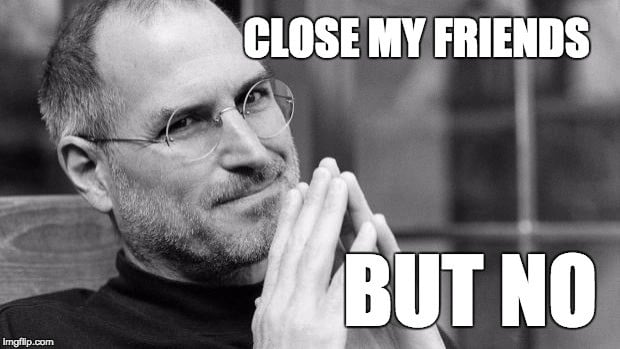
Conoscere ciò che i clienti vorranno usare, richiede:
- intelligence 💡
- empathy 👂
💭 9 imprenditori su 10 sono stupidi o semplicemente non ascoltano?
Troppe startup non riescono ad attirare gli early adopters di cui hanno tanto bisogno. Si impegnano a fondo per essere notevoli, ma finiscono per distinguersi per la mediocrità.
⚠️ You don’t get away with mediocrity.
Your customers deserve better. The world deserves better.
TL;DR
- l'approccio lean è il modo migliore per trovare il product-market fit.
- e un modello di business scalabile.
- il vostro MVP è destinato a conquistare gli early adopters e a superare il baratro.
- ma gli MVP spesso risultano mediocri.
- because entrepreneurs don’t listen to what the market is telling them
- e poi non riescono ad attraversare il baratro.
Customer validation kinda sucks 🤔
The lean approach was brought into the world so startups could nail product-market fit asap. And yet the lion’s share is still fucking it up.
What’s missing here? 🤔
Gli imprenditori fanno un pessimo lavoro nel capire cosa vuole il cliente.
Qual è la cosa che vi aiuterà a capire meglio un mercato?
🥁…🥁…🥁
Market research 🤓.
Probabilmente non sono i fuochi d'artificio che vi aspettavate.
Mi riferisco però alle ricerche di mercato del 2017.
Not surveys. Stay away from surveys 👎.
Didn’t we just agree that Steve wants you to figure out what your customers want without them telling you?
Let me break down real quick why surveys suck for customer validation 🙅:
- 💣 Surveys are faceless. Customer development is about understanding people’s pains and needs. There’s no way they can tell you about those by ticking off some checkboxes.
- 💣 Surveys only tackle what’s already on your mind. You think your idea is epic and you’ll design your survey to see that confirmed. These presumptions will make you miss out on a lot of insights customers can give you. And are you so sure you know the right questions to ask?

- 💣 Surveys lack context. Do you know who you’re talking to? Segmentation is critical. How do you know if it’s good or bad that 20% confirmed your idea if you have no tangible idea of who they are and what makes them tick?
- 💣 Surveys don’t allow for proper follow-up. The whole idea of customer development in the lean approach revolves around finding paying customers for your MVP. Surveys don’t give you the opportunity to build relationships with potential customers.
Individuals are honest only to the extent that suits them, including their desire to please others.
💬 Dan Ariely in ‘Predictably Irrational’
- 💣 Surveys don’t predict future buying behaviour. Surveys measure rational motives, but human decision-making is determined by a lot of factors, a lot of which are not conscious or rational. People think they act out of ratio, while in fact they often just rationalise actions they did for reasons they can’t articulate. So even if people say they will buy your product on your survey, doesn’t mean they actually will. If you’d like to dive deeper into this, check out Thinking Fast & Slow by Daniel Kahneman and Predictably Irrational by Dan Ariely.
In effetti, la convalida del cliente nella Lean Startup sembra essere piuttosto un concetto astratto.
Joel Gascoigne dallo strumento di gestione dei social media Buffer ha convalidato la sua idea da “simply tweeting the link and asking people what they thought of the idea.”
He then goes on saying 💬:
I got some useful feedback via email and Twitter, I considered it “validated”. In the words of Eric Ries, I had my first “validated learning” about customers.
Davvero? 🙄
Some buddies of yours cheer you on and — hallelujah — the idea is validated?
Naturalmente, l'Buffer si è rivelato un ottimo prodotto per il quale molte persone sono disposte a pagare, ma non si può certo definire una tecnica di validazione.
The Lean Startup dictates you should validate your idea as quickly as possible and then build from there. But what is validation, really? 🤷
People saying something is a good idea doesn’t mean it is and it sure as hell doesn’t mean they’ll buy it.
But if you’re all psyched about your amazing idea, you’ll settle for that and start building. Of course you will 😉.
And that’s how you get Mediocre Viable Products that don’t take off.
👉 Suicidio di una startup.

Or how about this 👇.
Dropbox ha ottenuto 75k email opt-in in un giorno grazie a un video pubblicato su HackerNews.
That is as sweet as honey 🍯.
But does it mean your idea sucks if you don’t get that? 😐
Not every idea is going to go viral. There’s also a big difference between someone giving you their email address and someone giving you money.

Il punto è questo:
La convalida del cliente, come prescritto dalla Lean Startup, è a dir poco approssimativa. Una scarsa validazione porta a MVP difettosi che poi non riescono a ottenere trazione.
Chissà quanti grandi prodotti non hanno mai visto la luce a causa di una pessima versione minimamente fattibile costruita su una pessima validazione da parte dei clienti? O il contrario?
You’re just not listening. You’re drunk in love with your baby-girl/boy idea and are looking everywhere for signs you should pursue it.
You’re just seeing whatever you want to see 😍.
Si tratta di casi di bias cognitivi, in particolare confirmation bias e overconfidence fallacy.
It’s okay that you have that. Everyone does. It’s how your brain works and inherently human. The only way to cope with these blindspots, is to acknowledge you have ‘m and work your way around.
Oh, and if you’re one of those “yeah, yeah but I’m different” — kind of people, you’ve already lost.

TL;DR
- gli imprenditori fanno schifo nel capire cosa vuole il cliente.
- they’re missing market insights
- la validazione del cliente, come prescritto dall'approccio lean, fa schifo.
- I sondaggi fanno schifo.
- ogni idea diventa virale
- email opt-ins don’t equal money
- una scarsa validazione porta a MVP difettosi che poi non riescono a ottenere trazione.
- they’re prone to cognitive bias, clouding your vision
Minimum Viable Audience 👨👩👧👦
There’s a better way ☝️.
Invece di costruire un prodotto per un pubblico potenziale, iniziate a costruire un pubblico per un prodotto potenziale.
Today’s Internet is the entrepreneurial gift from heaven for its ability to give you live insights in what the world in all its complexity is thinking and feeling at any time.
Le persone vengono subito a raccontarvi i loro problemi, i loro desideri e le loro esigenze senza che voi glielo chiediate. Finché ci si prende il tempo di guardare 👀.
Real-time market research 🕵️. Eat that, surveys.
Utilizzate i social media e le comunità internet per ascoltare prima di iniziare a parlare. Imparate a conoscere le persone a cui vi rivolgete, in modo da poter costruire qualcosa che loro desiderano e per cui sono disposti ad aprire il portafoglio.

Find your audience — the people you can and want to help — and connect with them.
Siate una mosca sul muro, tenete occhi e orecchie aperti. Poi entrate e impegnatevi.
Chiedete dei loro dolori, informatevi sui problemi che hanno a cuore e scoprite di cosa hanno bisogno.
You’ll find this knowledge to be incredibly powerful.
Not only are these people discussing the exact problems you’re looking to leave your mark on, they’re also using the language typical for your niche.
Every conversation will make you more of an expert and increase your ability to create unique value 👨🔬.
Once you’ve immersed yourself in the tribe, its time to start building your influence by giving to the community.
Il vostro gioco consiste nel dare valore. Non ancora sotto forma di prodotto, ma di contenuto:
- helps 🤝
- inspires 💡
- delights 😊
- entertains 🤹.
Senza aspettarsi qualcosa in cambio.
One of the key things we’re learning is that you need to build an audience before you build your product. Build your audience not for marketing, but for learning.
Fondatore Germoglio rapido e CrazyEgg
You’ll be learning directly from a real group of people as they react to relevant triggers — your content — instead of trying to garner a strained idea from generic market research based upon vague lean startup validation techniques.
These are real people who’ll pay attention to you, with real pains 🤕 you can solve and real goals 🥅 you can help them achieve 🏆.
The cues you’ll get from your audience bouncing back off your content will give you the ingredients to cook up a minimum viable product that is Exceptional (EVP) rather than Mediocre (MVP) and gets the early adopters all lyrical, ready to bring you across the chasm 😏.
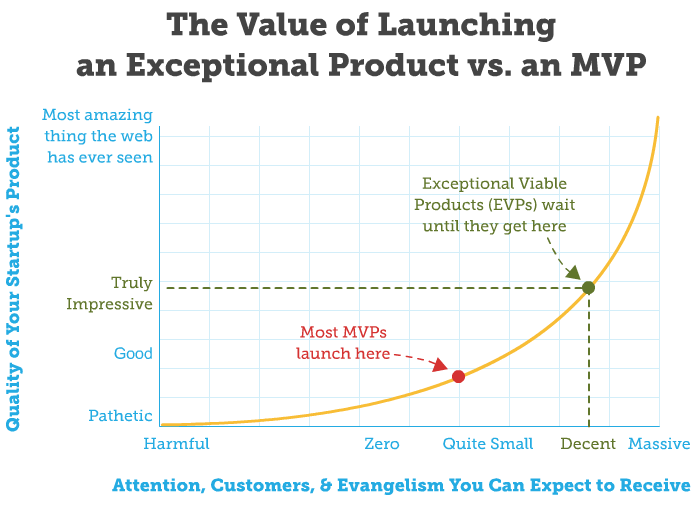
Even if your EVP doesn’t get the traction you hoped for, you’ll still have a loyal audience coming back because you’re feeding them value and helping them advancing in whatever it is they care about.
Potete mostrare loro wireframe, slide decks, landing page, mockup o altri campioni di prodotti a basso rischio e vedere come reagiscono.
If you can pull off building yourself an engaged audience, you’ll have a focus group that will do the heavy marketing lifting for you 💪.

La maggior parte delle persone inizia con qualcosa che vuole vendere e poi deve capire come venderlo e a chi venderlo.
With an audience, you’ll have your customers sitting in your backyard, waiting for your next big thing.
They’ll be your compass, able to get you back on track as soon as you go off the rails. If they’re suddenly responding less, it could mean you’ve lost touch and need to re-adjust your focus.

The beauty is that maintaining an audience requires minimal effort because it’s just about being human. You’re talking and listening. You’re connecting with other human beings, which is what both life and business are ultimately all about.
TL;DR
- invece di costruire un prodotto per un pubblico potenziale.
- costruire un pubblico per un potenziale prodotto.
- i social media e le tribù di internet consentono di effettuare ricerche di mercato in tempo reale.
- trovare le persone che potete e volete aiutare.
- il vostro pubblico vi dirà che vuole pagare.
- costruire un EVP (Exceptional Viable Product) invece di un MVP.
- mantenere un pubblico è facile.
- it’s talking, listening — and just being human
Why giving is your superpower 💫
You do have a magical superpower 👉 Generosity.
It also goes by the name of altruism. Or selflessness 💁.
🎁 Regalare valore gratuitamente.
Sounds a tad contradictory to the transactional nature of business? 🤔
Never in the history of the world has there been someone who has given away too much. It’s one of the things that sets apart leader dai seguaci.
Most people just laugh when they hear that the secret to success is giving . . . Then again, most people are nowhere near as successful as they wish they were.
💬 Bob Burg and
John David Mann
‘The Go Giver: A Little Story About a Powerful Business Idea’
When you give away value so good you could have charged money for it, you show you’re in the business of helping people rather than helping yourself.
This is selfless goodwill — you give something without expecting anything in return. People will admire you for it.
Giving builds your ethos — the authority, credibility and honesty that comes with your message and is essential for persuasion.
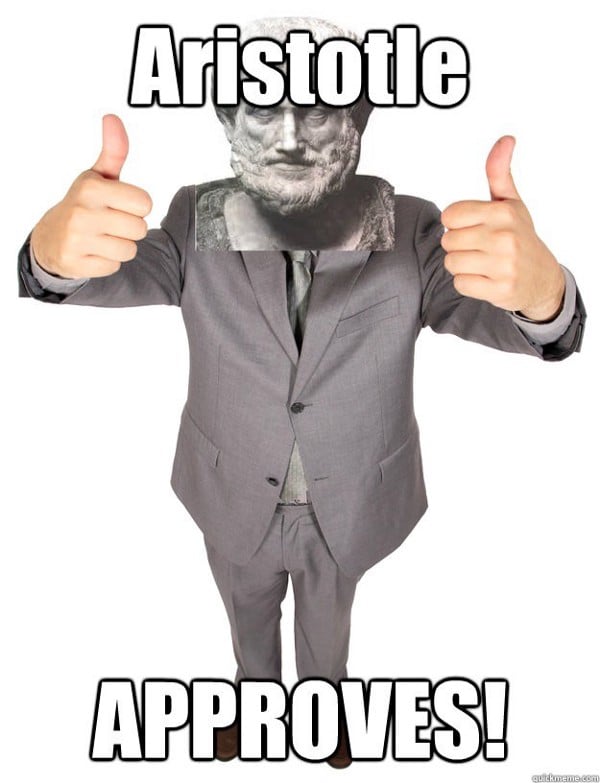
It’s how Aristotle and his old Greek friends rolled when they wiped the floor with their debate opponents in Athens.
Dare costruisce la vostra capacità di influenzare e quindi di vendere.
✋ What’s more: humans are wired to repay generosity.
Try sending out a batch of Christmas cards to complete strangers 📬. You’ll be amazed by how many you’ll get back. From people you have never met.
Questo è stato un vero e proprio esperimento sociale nel 1976.
Philip Kunz e Michael Woolcott hanno inviato 578 cartoline di Natale a perfetti sconosciuti e ne hanno ricevute ben 117 indietro.
Tasso di risposta 20%, baby. I marketer ucciderebbero per questo, al giorno d'oggi.
If you give people exceptional value regardless of whether they ever pay you a dime, they’ll feel a need to repay you one way or another.
By choosing you over a competitor, for example 😎.
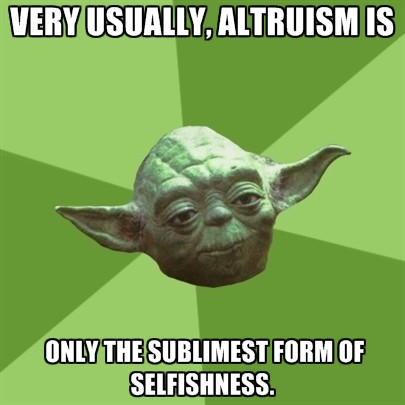
So. No cutting corners, no holding back, no being stingy.
👉 Help, inspire, delight & entertain.
Give. At every step of your prospect’s journey.
Blog posts, podcasts, videos, ebooks, whitepapers, webinars, online courses.
Whatever your audience likes best 👉 go all-in and make it high-quality.
- 🖐️ Giving allows you to connect with customers without pitching. They’ll lower their walls because they’ll know, like and trust you.
- 🖐️ Giving pulls people towards you. No desperate cries for attention needed, just magnetic superpowers.
- 🖐️ Giving will make you a trusted authority in your field.
There are two kinds of people: eaters and bakers. Eaters think the world is a zero-sum game: what someone else eats, they cannot eat. Bakers do not believe that the world is a zero-sum game because they can bake more and bigger pies. Everyone can eat more. People trust bakers and not eaters.
Le persone acquistano e si rivolgono a persone che conoscono, che amano e di cui si fidano.
Questa è una verità universale.
It was true in Dale Carnegie’s time when he wrote the all-time bestseller How To Win Friends and Influence People and it’s true today.
Customers aren’t looking for a sales pitch.
They’re looking for solutions to their problems.
Give it to them and you’ll be their hero 🌟.
High-value content is a low-threshold way of helping your target group while learning where you can make a difference. It’ll help you build a loyal audience that trusts you to solve their problems.
The very best thing you can do as a startup founder is to earn a reputation for helping others.
If you help people advance in whatever they care about, they’ll respect you, they’ll trust you, they’ll engage with you, they’ll want your help, they’ll seek your opinion, they’ll share your content. And they’ll buy from you.
TL;DR
- la generosità/altruismo/disinteresse è il vostro superpotere.
- offrire valore gratuitamente.
- it’s one of the things that sets apart leaders from followers
- dare costruisce la vostra capacità di influenzare e quindi di vendere.
- le persone sentiranno il bisogno di ripagarvi.
- le persone acquistano da e si rivolgono a persone che conoscono, che amano e di cui si fidano.
- build your klt — factor with content that helps, inspires, delights and entertains
“I already have a product, dumbass” 🙃
You’re probably reading this because you’re looking to get some actionable advice on how to market your startup for maximum growth 📈.
Ed eccomi qui a predicare le cosiddette saggezze su come avreste dovuto giocare la vostra partita di marketing molto prima di avere un prodotto.

Rimanete in attesa, le cose fattibili sono in arrivo.
Questo piccolo e bizzarro testo è la prefazione di una serie di post che hanno lo scopo di guidarvi nella giungla selvaggia del marketing B2B online.
Nelle prossime settimane pubblicherò delle guide su come ucciderlo:
- Comunità Internet
- Email a freddo
- … and whatever I still come up with (feel free to pitch in my idea pool)
But this right here, this value-audience fit stuff, is your skeleton key 🗝️.
It’s the One Key To Rule Them All 👊.
All of the guides I’ll be writing, all of the actionable advice will be built on that one guiding principle of building yourself a fanbase by giving value to people that value is of value to.
Canali e piattaforme come Facebook, LinkedIn, Google, e-mail sono solo navi che potete utilizzare per far arrivare il vostro valore al vostro pubblico.
And here’s the thing.
⚠️** SPOILER ALERT: HERE’S WHERE IT BECOMES RELEVANT TO YOU**⚠️
Se le startup possono fare queste cose da zero, pensate al potenziale se avete già una base di clienti.
Ma una base di clienti non è un pubblico ancora.
❓ Ask yourself.
Cosa vi rende unici? Che valore stai dando?
Qual è il tuo campo? Cosa ti rende un re?
Chi stai aiutando? A chi stai dando valore?
Per chi stai scrivendo contenuti? Per chi stai costruendo il tuo prodotto?
Can’t come up with an answer?
👍 Bene.
Now you know why no one is reading your blog posts.
Why only your mom likes your Facebook updates.
Why you’re getting so much hate on your cold emails.
Why your website traffic isn’t going up.
Why none of your trial users starts paying.
👉 Ora sapete qual è il problema.
Smettete di mandare e-mail a caso a persone che chiedono attenzione.
Smettete di creare un milione di pagine di destinazione per vedere cosa funziona.
Smettete di postare senza pensieri su Facebook, LinkedIn, Twitter e Instagram.
Smettete di buttare soldi nello scarico di Facebook Ads e Google Adwords.
Smettete di cercare trucchi magici e vittorie rapide.
✋ Iniziare da zero.
Trovate l'area dei problemi in cui potete essere il re delle soluzioni, quindi costruite un regno di valore su di essa.
Not sure if you’re so unique? 😯
Double-down on your topic until you’re an authority to be reckoned with on something you truly know and care about. Pursue your curiosity and you’ll find the path that’ll make you unique 🌟.
TL;DR
- costruire una fanbase dando valore è la chiave del marketing online.
- più materiale utilizzabile è in arrivo.
- nel frattempo:
- che cosa vi rende unici?
- a chi state dando valore? .
- smettete di cercare trucchi magici e vittorie veloci.
- trovare dove si può essere re e costruire un regno di valore su di esso.
Lean from the best 👑
I didn’t invent this stuff.
I’m just the clown reporting it.
È già stato fatto in passato ed è stato fatto bene.
Alcune delle startup di maggior successo oggi in circolazione hanno costruito il loro regno sull'offerta di contenuti di alto valore, piuttosto che su vittorie rapide e growth hack.
If you don’t take my word for it, take theirs.
1. Kissmetrics 📊
If you’ve been reading stuff on online marketing and startups, there’s no way you don’t know about Kissmetrics, marketing analytics software.
Founded by content marketing kings 🤴 Hiten Shah and 🤴 Neil Patel Kissmetrics started blogging around 2009. Long before their product was launched.
Per farlo, hanno identificato le loro personas d'acquisto e creato contenuti che le aiutassero.
Today, about 9 million online marketers, founders, CTOs,… read their posts every month. La loro intera attività si basa su questo 🚀.
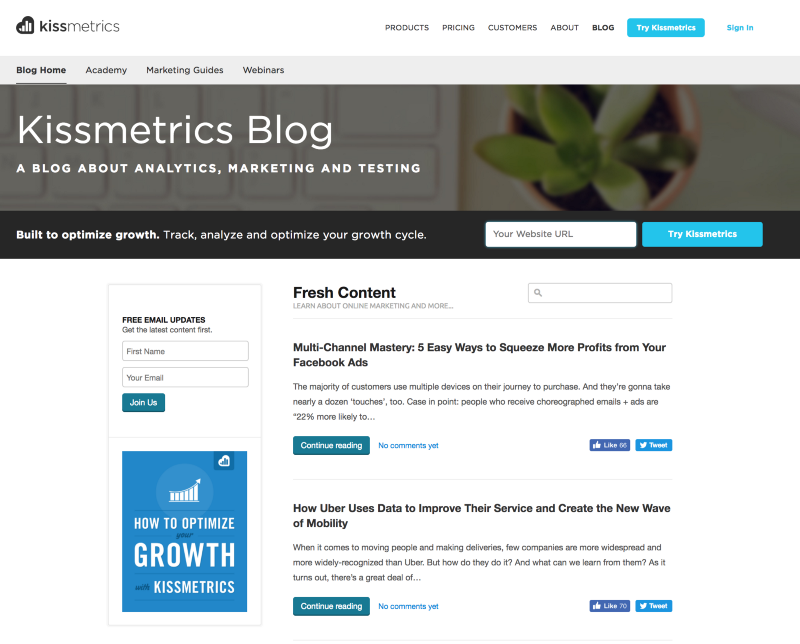
It shows you the unparalleled power of blogging to slow-cook an idea into a readers’ head.
I couldn’t see myself using anything else than Google Analytics. It’s easy, it’s good and it’s free. Why would I change? 🤔
But while making my way through startup marketing, I found myself regularly reading well-written posts over at Kissmetrics’ blog.
Not just stuff like ‘Key Customer Metrics You Need To Be Tracking’, but also How Search Rate Is Killing Your Conversion Rate (And How To Fix It) and Effective SEO For All Stages Of The Conversion Funnel.
Questi ragazzi sono ovunque si guardi. I loro contenuti aiutano davvero a far crescere il vostro business. These guys must know what the hell they’re doing 😯.
Quindi, a un certo punto, ho esagerato.
Today, I’m not only using Kissmetrics, I’m recommending it to other people.
Aggiornamento: Purtroppo Kissmetrics è stato venduto e il blog è stato messo offline. Parte del blog è stata spostata su neilpatel.com, ma nessuno degli articoli citati è ancora attivo.
2. Caccia al prodotto 😼
What cool products are you using?
It’s a question we all ask and it turned out to be one hell of a community builder: Product Hunt.
Product Hunt is the little baby of Ryan Hoover. Ryan is one of those guys who just friggin’ loves everything new and cool ✨.
Non solo per divertimento. Per Ryan, i nuovi prodotti sono un'opportunità di apprendimento e, soprattutto, un modo per entrare in contatto con persone che la pensano come lui.

Per scoprire se era possibile creare una comunità intorno a questo argomento, Ryan Hoover ha iniziato con una newsletter curata via e-mail che presentava ogni giorno i migliori prodotti nuovi.
Within two weeks, Ryan’s little mailing list had 170 subscribers geeking over new products discovered by 30 hand-picked contributors, among which startup founders, VCs, and prominent bloggers.
Today, Product Hunt is Silicon Valley’s favourite little playground. A tightly-knit community of like-minded geeks who bond over anything hot 🔥 and the new ✨. Tech, but also books, podcasts and games — you name it.
3. Moz 🔍
Here’s what Rand Fishkin, founder of SEO software Moz, has currently pinned on his Twitter wall.
Capite cosa intendo? 😎

Come Kissmetrics, Moz è stato costruito sulla base di un blog.
For the first 18 months, they built an audience with little free tools and downright legendary SEO for beginners guides 📚.
These guides have been around for more than 12 years now. They’re being continuously updated and are still pulling in new customers every day.
Quando hanno iniziato a sottoscrivere abbonamenti nel 2007, Moz aveva un pubblico di circa 10.000 marketer che usavano per perfezionare e far crescere il loro valore.
By 2008–2009, Moz was pulling in subscribers from far beyond their own community. Today it is one of the leaders in SEO software.
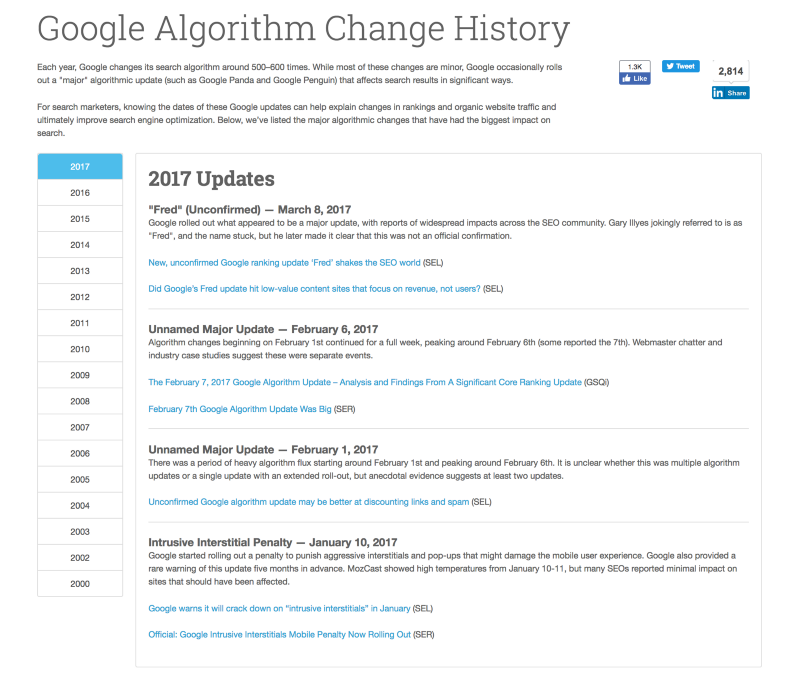
Moz is also known for staying right on top of its industry with thorough research. They’re famous for annually documenting changes in Google’s algorithm and teaching on how to go about those changes. It’s a unique resource that gives them invaluable thought leadership 💭.
Without that “marketing first” approach, I’m skeptical if we ever could have gotten a product off the ground.
💬 Rand Fishkin — Founder of Moz
Rand ha perseguito le sue convinzioni sulla costruzione di comunità come marketing quando ha collaborato con HubSpot per creare Inbound.org, una comunità per i marketer online.
4. HubSpot 🎯
HubSpot è un impero del marketing costruito su valori di ogni tipo.
Tra le altre cose, questi ragazzi sono campioni quando si tratta di marketing di progetti collaterali. Costruiscono piccoli strumenti gratuiti che apportano un grande valore a molte persone.
L'esempio più famoso è WebsiteGrader, uno strumento che vi dice quanto sta andando bene il vostro sito web per metriche chiave come le prestazioni, la predisposizione per i dispositivi mobili, il SEO e la sicurezza. Gratuitamente.
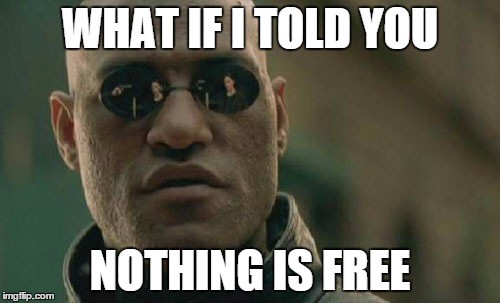
It goes without saying HubSpot’s software offers you the solutions to pain points that may emerge from WebsiteGrader. They’ll make sure you know about that with drip email campaigns 💦 and quality content 📚.
HubSpot is big on content. They have a whole library of free ebooks on inbound marketing topics. They complement those with checklists 📋 and templates 📝 to get their audience to really act on those guides and push them further down the sales funnel.
The Next Big Thing… 💯
Now that you’re all hot and ready to get cracking on that audience…🔥
I’ll have you wait for a week to show you how to go about that 😛.
💬 We’ll talk about:
- how to find a field where you be of value in 🤴
- how to find your audience where you can be of value to 👨👩👧👦
- how to make sure the things fit together like they were meant for each other, forever and ever 💏
Make sure to subscribe so you don’t miss anything 😏.

Ci auguriamo che questo post vi sia piaciuto.
If you did, hit ❤ to spread the word!
For more hot stuff on startups, growth marketing and sales
👉 iscriviti qui
👉 segui @salesflare su Twitter
- I 20 migliori libri di vendita che Elon Musk sta probabilmente leggendo - 14 Febbraio 2023
- 6 modi infallibili per far ottenere alla vostra startup i primi 100 clienti - 6 dicembre 2022
- Come costruire un imbuto di vendita che venda - 2 Settembre 2021
